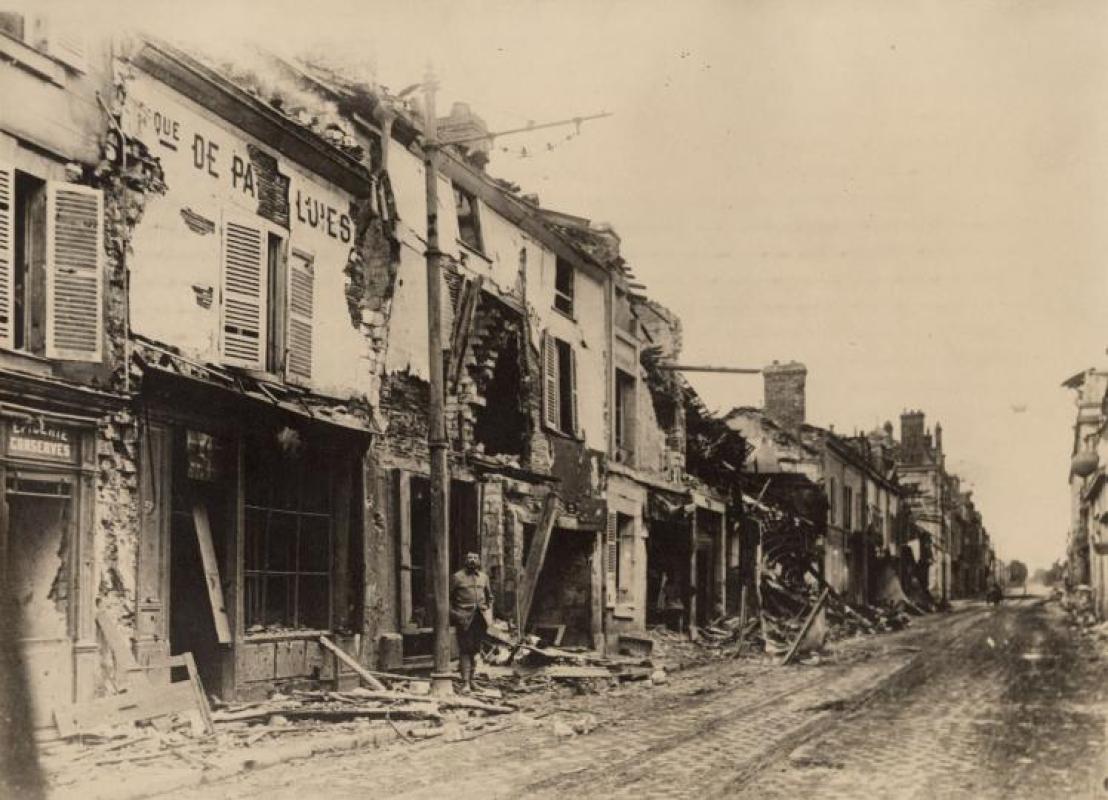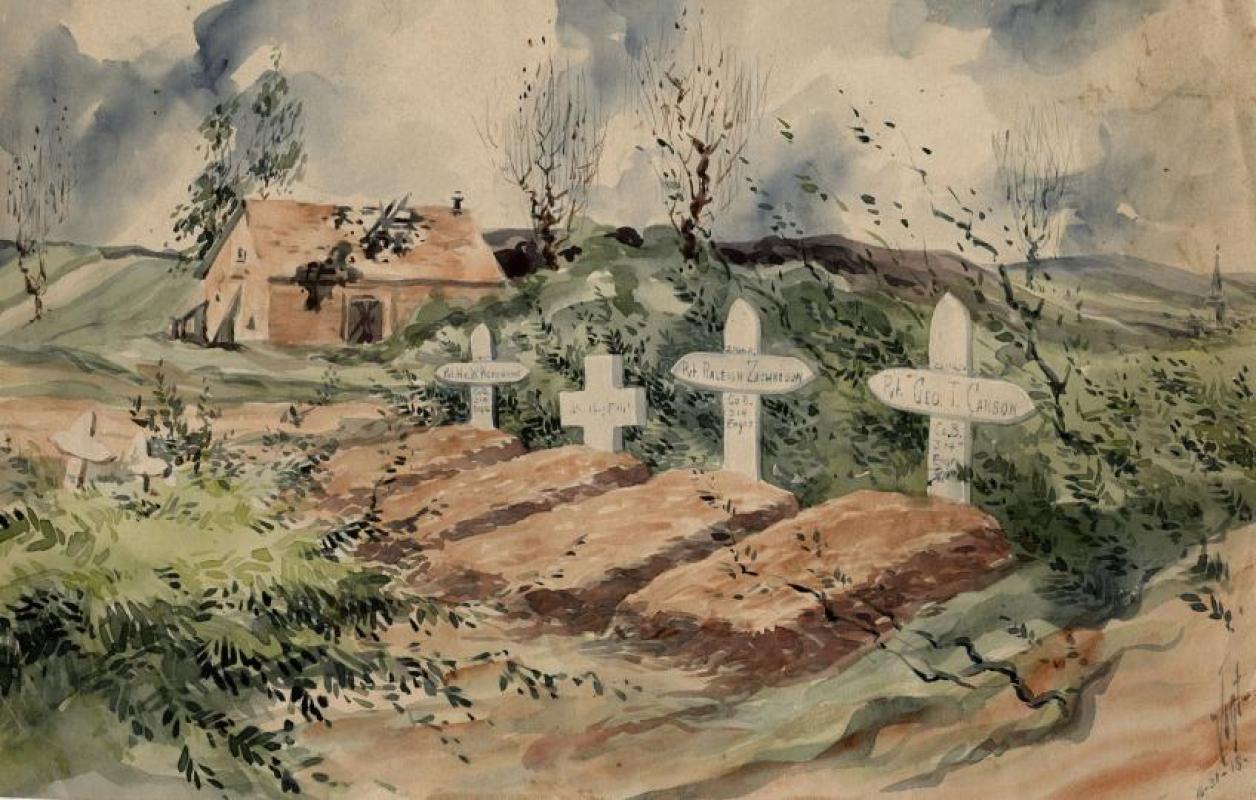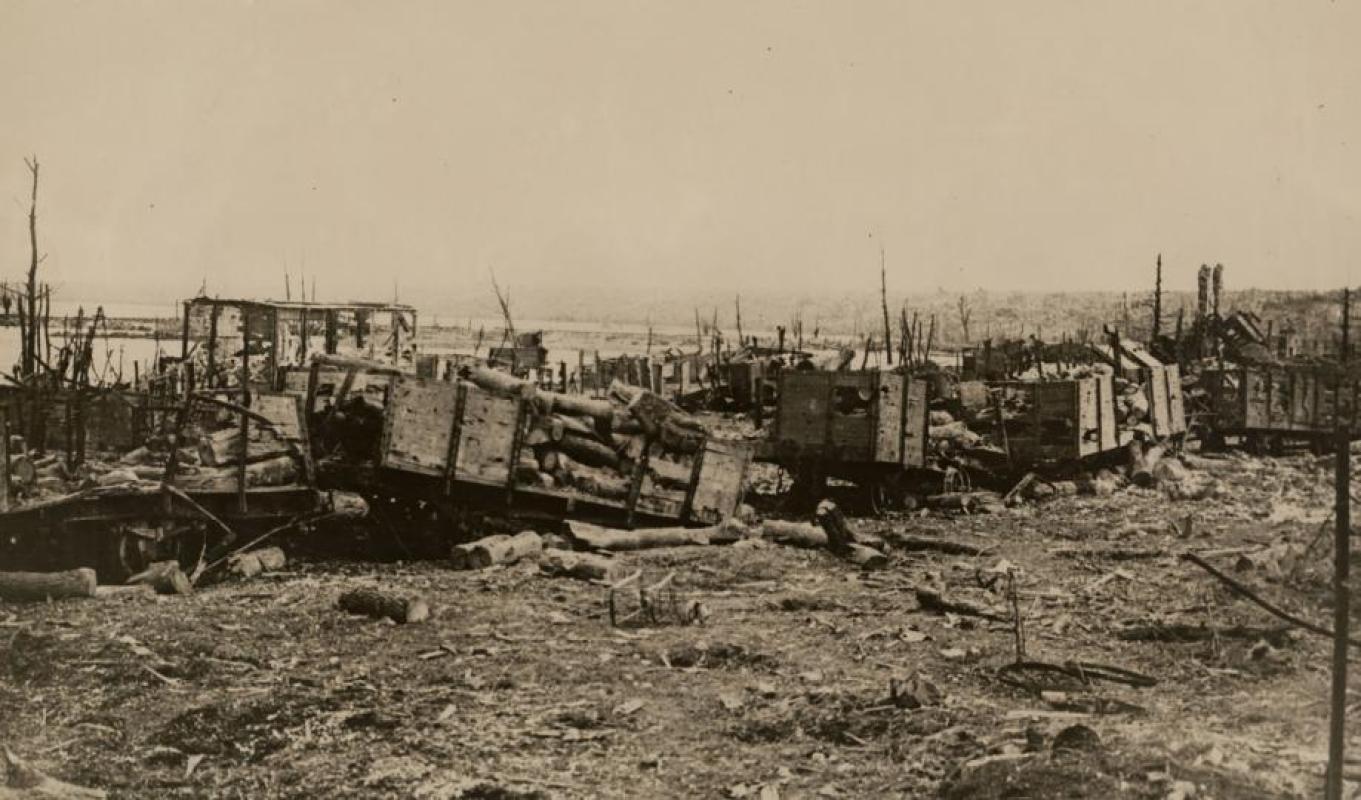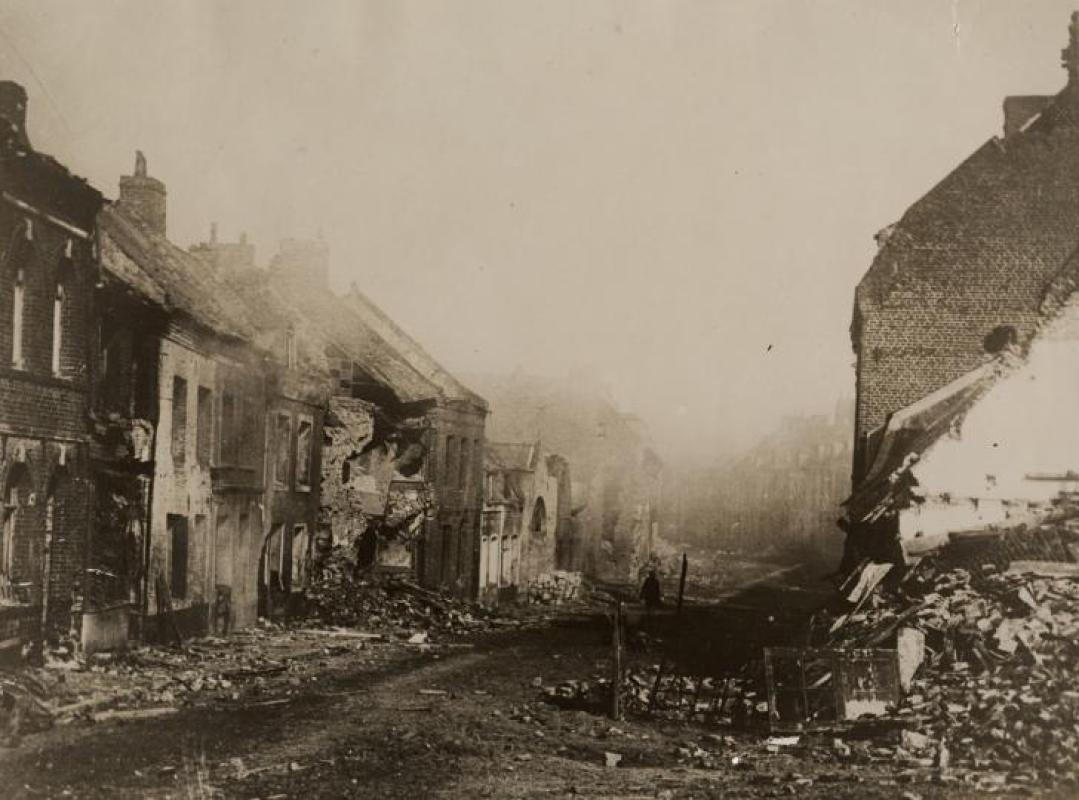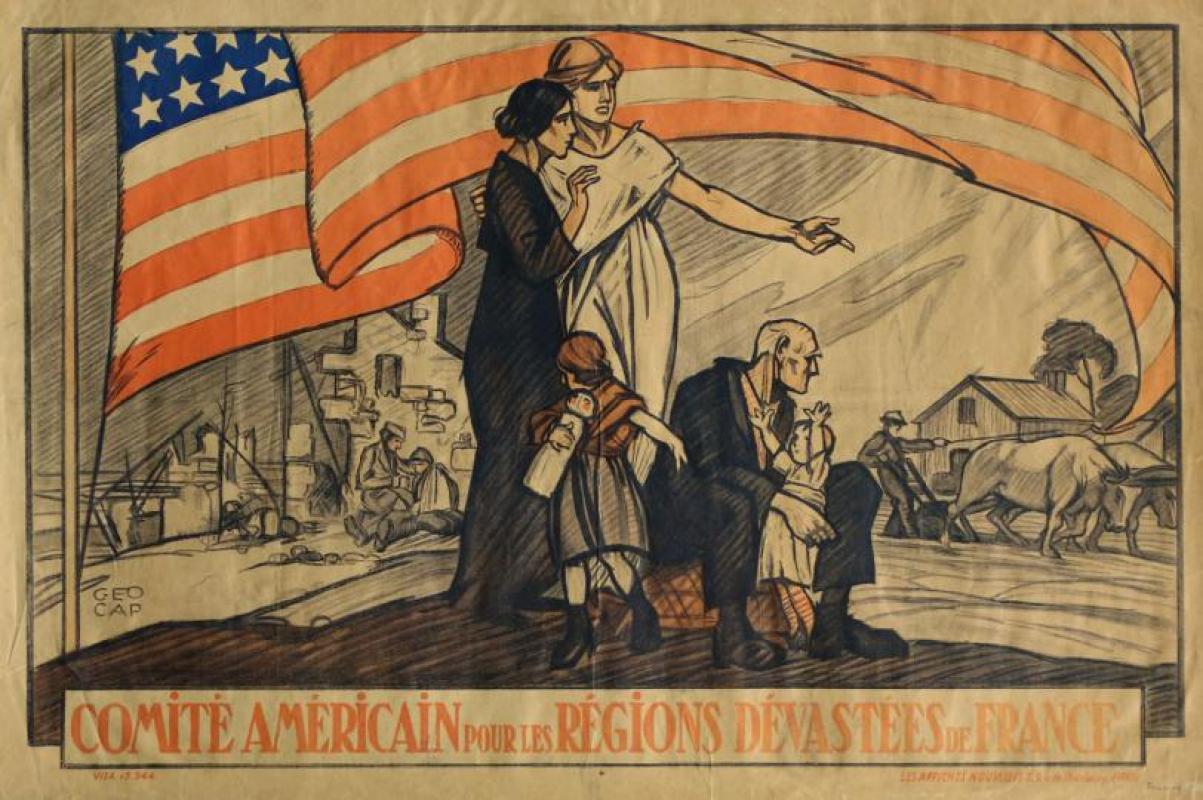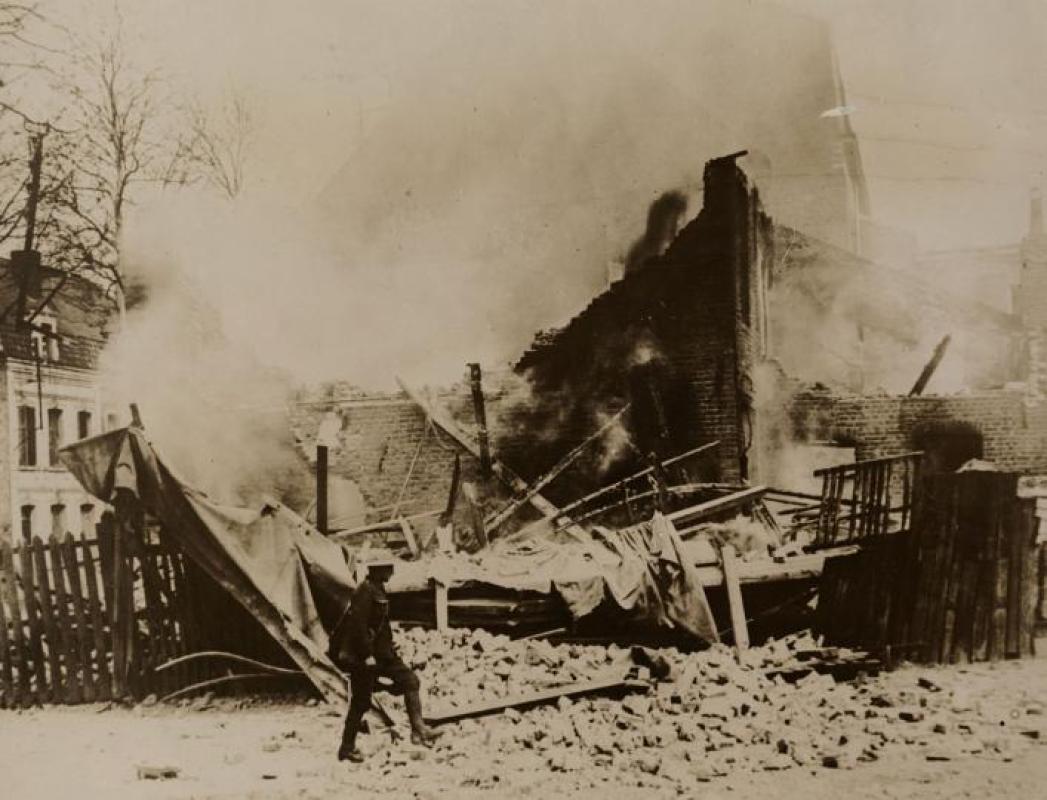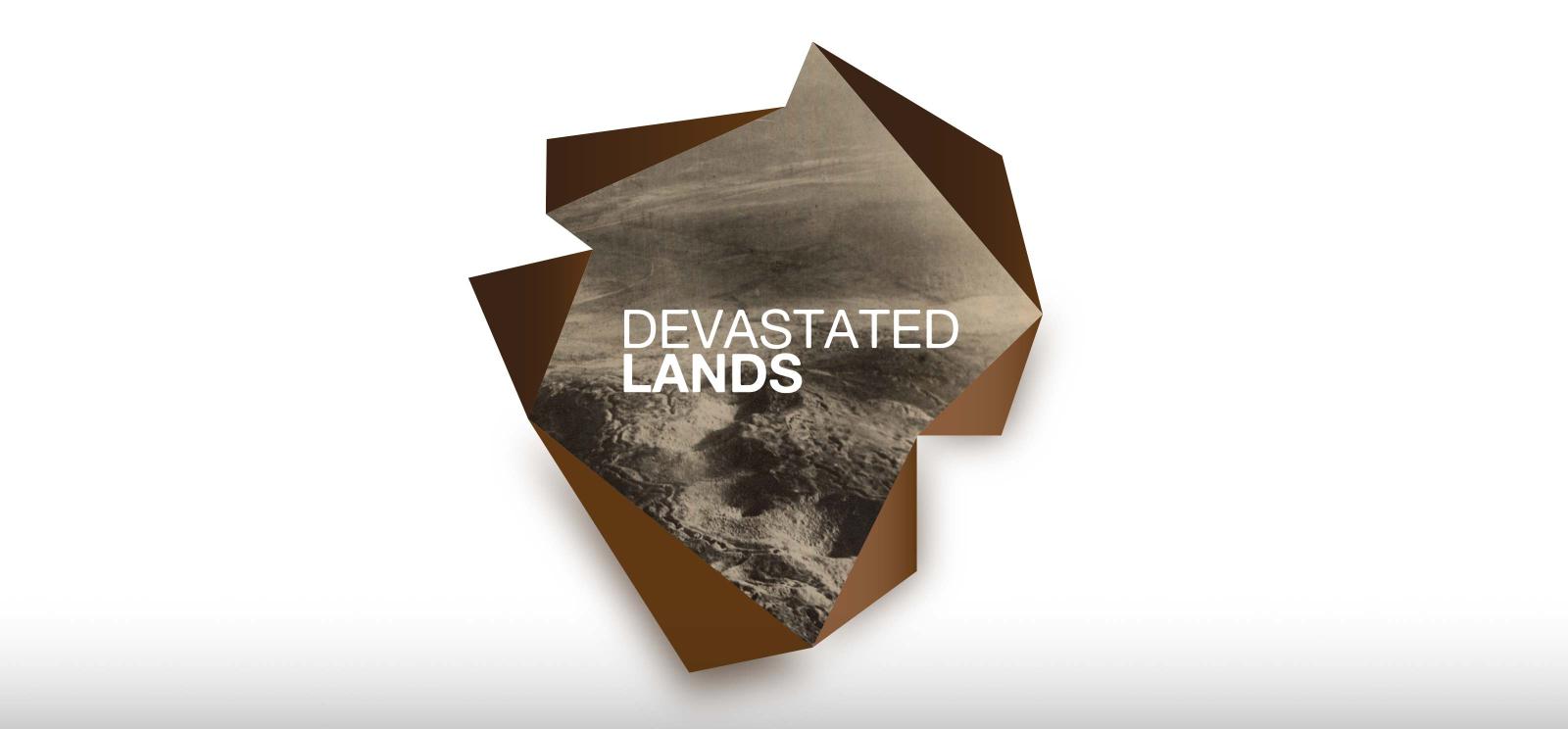
Devastated Lands
“It was a waste so utter that even the ruin was ruined.”
— John Masefield, British author
The Western Front of World War I that the American forces saw when they arrived and until they returned home was comprised of scenes of environmental degradation on an unfathomable scale, obliterated villages with only rubble to mark their place, vast cemeteries and massive destruction.
Much of the landscape of the Western Front in 1919 looked like an uninhabited planet very foreign to them. Of course, the other nations that had been there since 1914 had seen and lived in the destruction, but never became inured to it.
Devastated Lands examines these desolated landscapes through a series of photographs and illustrations from the collection of the National WWI Museum and Memorial.
Adelaide Travis, American Red Cross canteen worker, Foreign Service wrote home on May 19, 1919 from France: “We went to the front a week ago today: to Montdidiers, Amiens, Albert, Lens, Arras, St. Quentin and back through the Forest of Compaigne. There is no use my trying to describe the destruction and desolation up there. No description, picture or amount of imagination would give you any idea of it. I was awfully shocked and after seeing it all I marvel that any of them are alive to tell what they have been through. It was just a tiny part of the British front that we saw but it has made a lasting impression on me that will last as long as I live.”
A French poster, “The Voice of the Ruins” by Victor Prouve, lamented that [translated]: “The Voice of the Ruins it mounts from the ravaged earth, from the devastated orchards, from the burned factories, from the destroyed villages, from the walls, fallen or gasping, from the moving solitude of phantom cities.”
Devastated lands in France and Belgium from the destruction of World War I are still evident. Examples of affected French towns and villages include Fleury-devant-Douaumont, Pozières, Ripont, Tahure, Regniéville, Flirey, Moussy-sur Aisne, Ailles and Courtecon. Many others ceased to exist.
Unexploded ordnance from the war still lurks in the soil of Europe. Trained crews of disposal experts travel constantly through the battle areas finding, transporting and destroying live artillery shells, including poison gas ones, ammunition and grenades.
Farmers often turn them up in their fields and place the still-lethal objects alongside the roads. Teenagers harvesting potatoes in Belgium must be careful because dirt-covered German “egg” grenades look like the pomme de terre. It is estimated that it will take an additional 100 years to find and remove the still potent remnants of the First World War and the global conflict that followed 20 years later. The deadly legacy of the war is still with us.
